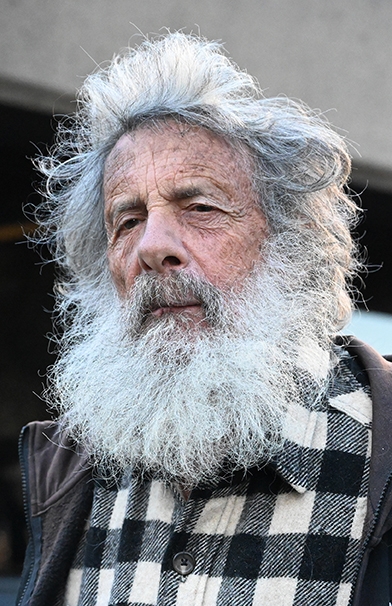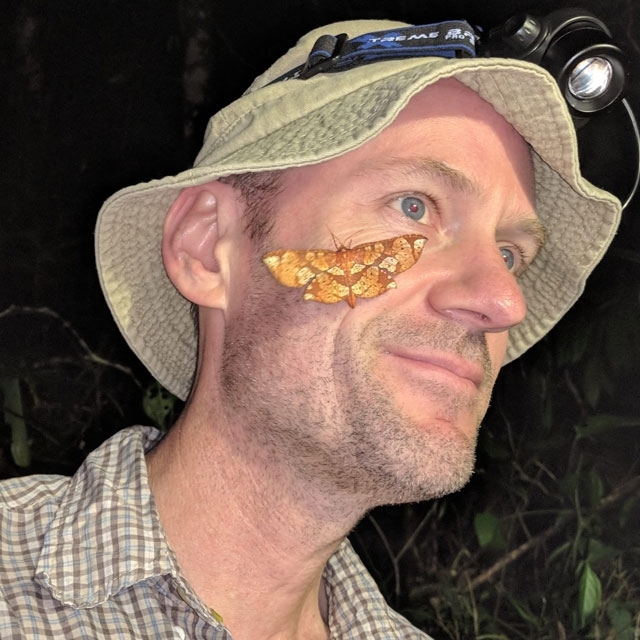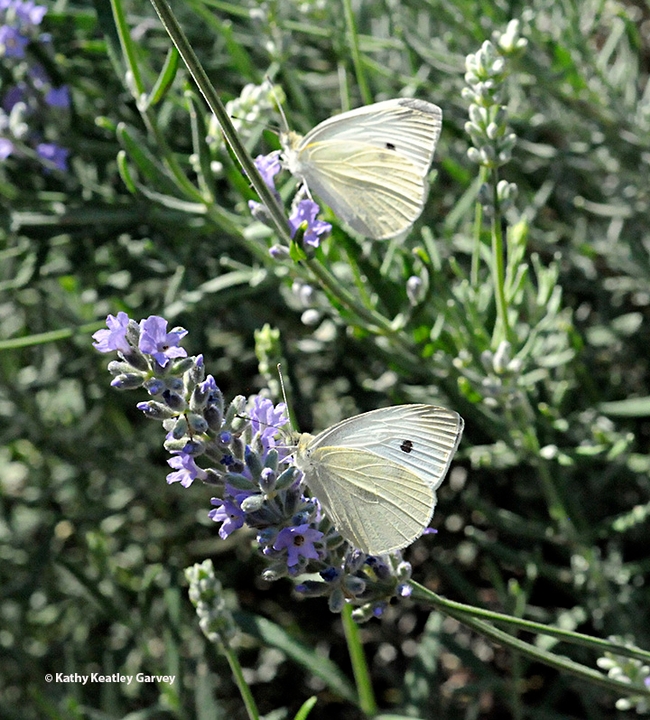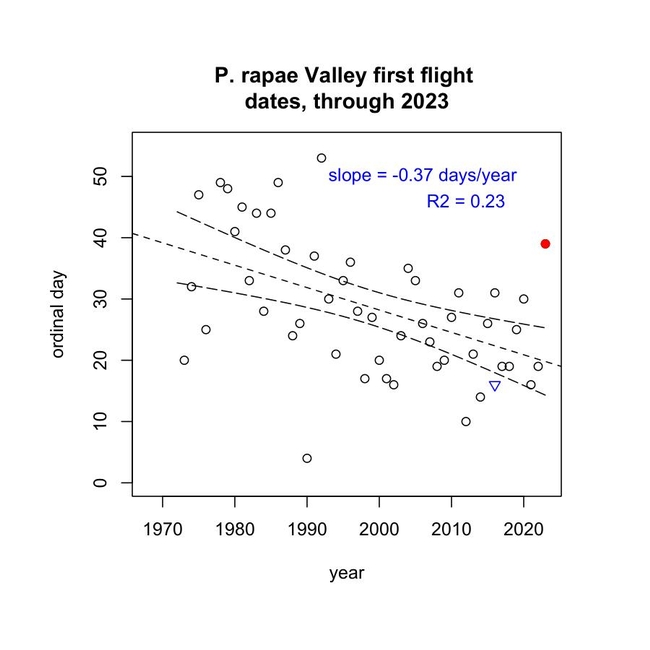
He participates in his annual "Beer for a Butterfly" contest that he's sponsored since 1972 as part of his scientific research to determine the butterfly's first flight of the year in the three-county area of Sacramento, Yolo and Solano. The rules: net the first butterfly and win a pitcher of beer or its equivalent. Suds for a bug.
Today, Feb. 8, proved to be a "bingo" day.
"I knew when I left the house at 10:10 this morning that today would be rapae day," he announced in an email with the subject line, Bingo!
"It was."
He spotted his first rapae of the year, a female, at 11:22 a.m. in West Sacramento, Yolo County. At 11:38, he saw a male. "Both were typical late winter phenotypes, quite different from what was flying in December," he noted. "My last in West Sac was Christmas Eve. So the rapae-less hiatus was 45 days, i.e. just over 6 weeks."
It was 64 degrees, clear, no wind.
"I did not get a specimen," Shapiro related. "Both of them were flying up near the railroad track at the top of the railroad embankment, where the ground is strewn with coarse gravel. That makes for a warm layer of air in full sun, but terrible footing. I am no longer so nimble or so self-confident as I used to be, and I never got a clean shot at either bug even though I got within about 6 feet of both."
"I could have stayed in that area and probably eventually would have caught one or both of them," Shapiro added. "I had to weigh that against covering the rest of the upland half of my site and possibly finding something else out. Remember that the butterfly-friendly window of time each day is still very short. I opted to keep moving, ultimately observing two atalanta (Vanessa atalanta, the red admiral) but nothing else. Malvella (mallow family) has not broken ground yet. Plenty of Erodium (family Geraniaceae) in bloom now, though.

P. rapae inhabits vacant lots, fields and gardens where its host plants, weedy mustards, grow. In its caterpillar stage, it is a pest commonly called "cabbageworm" that chews on cole crops.
Shapiro, who is in the field 200 days of the year, has been defeated only four times and those were by UC Davis graduate students. Adam Porter won in 1983; Sherri Graves and Rick VanBuskirk each won in the late 1990s; and Jacob Montgomery in 2016. The first three were his own graduate students.
Attached Images:

UC Davis distinguished professor Art Shapiro spotted two cabbage white butterflies today (Feb. 8) in West Sacramento, Yolo County. These weren't them. (Photo by Kathy Keatley Garvey)

This is the first-flight-of-the-butterfly chart by UC Davis alumnus Matthew "Matt" Forister, the Trevor J. McMinn Endowed Professor in Biology, and Foundation Professor, Department of Biology, University of Nevada.